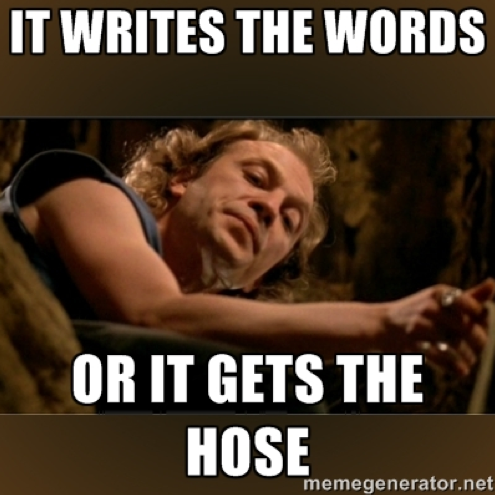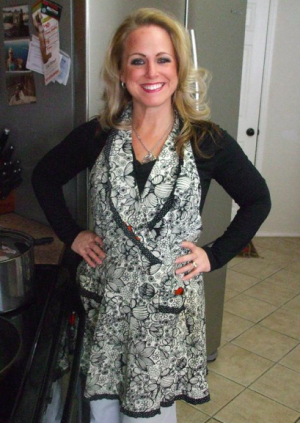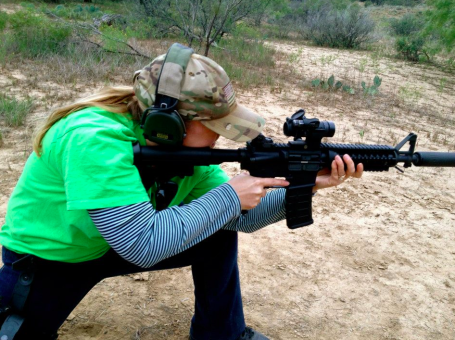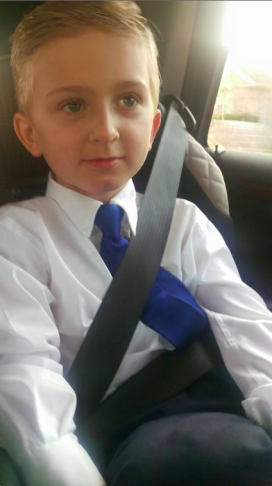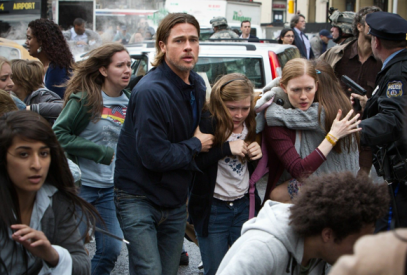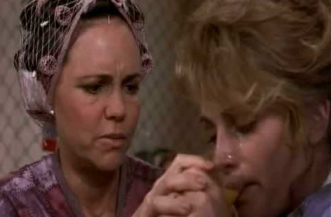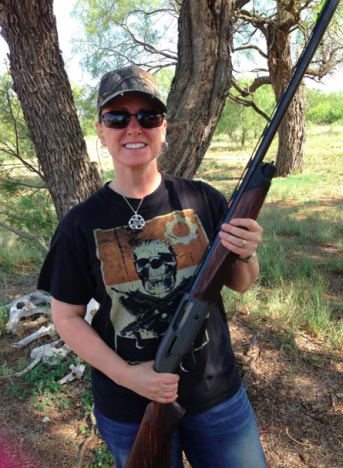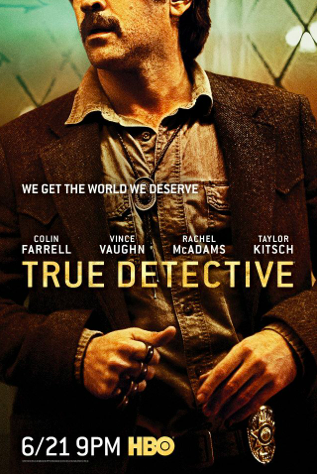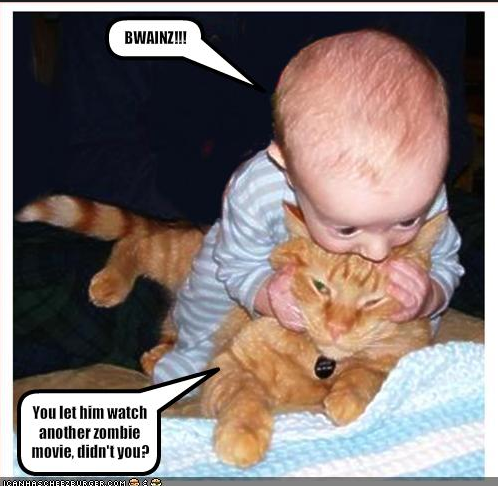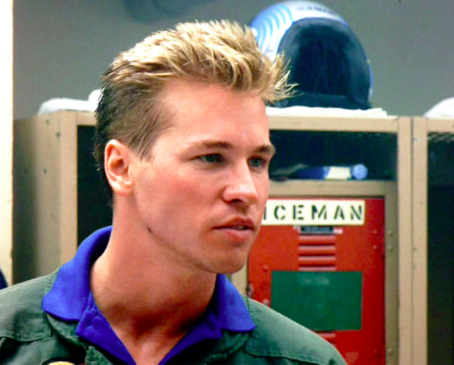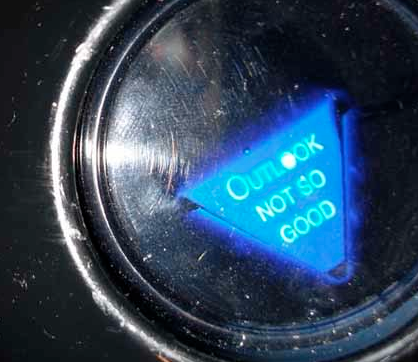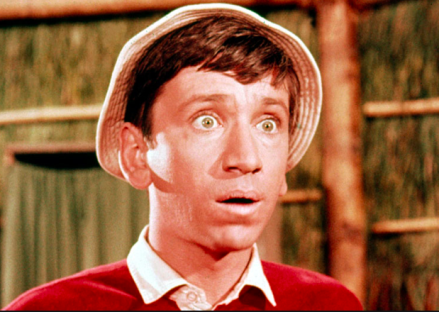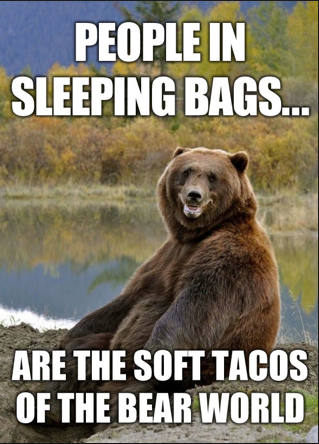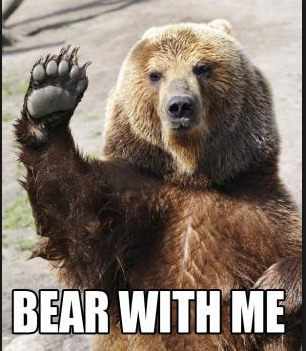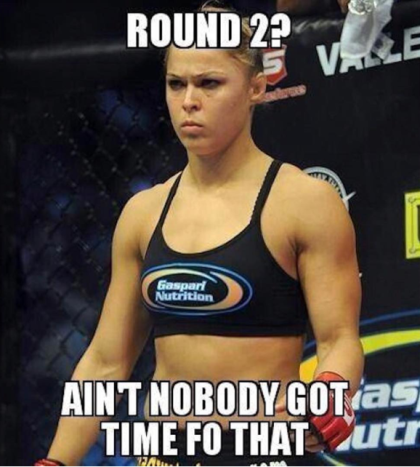Kristen Lamb's Blog, page 48
September 25, 2015
Why Our Author Brand is More Important than Ever Before
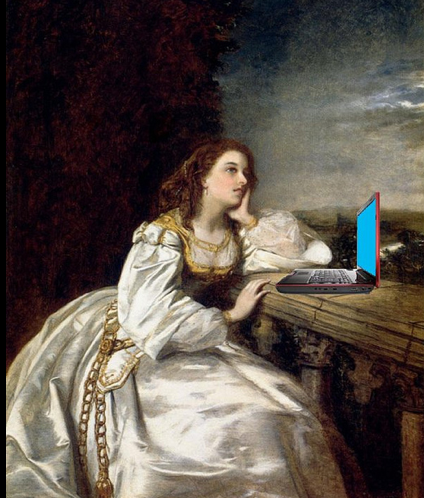
Image via Flickr Creative Commons, courtesy of Mike Licht
For the past few months I’ve been focused on writing and not on social media. Hey, even the Social Media Jedi can get burnout ;) . But now we’re going to shift gears because, aside from writing the actual book, social media (branding) is the biggest part of our job. And I can hear the moaning and gnashing of teeth already.
Here’s the thing. We don’t have to do social media. No one will take us to writer jail if we don’t. So I will narrow this down. If you simply love the art of writing and don’t necessarily long to be paid for writing, social media is not that big of a priority. Social media is only important for those of us who like money.
Thus, for those of us who want to make a living as a professional author, we must take author branding seriously. We are a business. Want to be successful? Do what successful people do. Successful authors have a brand and use social media well.
When I first began blogging about social media, an on-line platform was an edge. Now? It is a lifeline.
Point of Sale Has Changed FOREVER
When Hubby and I first married seven years ago, you couldn’t swing a dead cat without hitting a bookstore. Barnes & Noble and Borders megastores crouched at every corner. They were large and fatted from all the small indie bookstores they’d devoured.
We would peruse the shelves and I’d dream of the day I’d see my books out on those display tables. But even then, I had a knot in my stomach. I knew these were halcyon days for the mega-store. We’d already seen what iTunes had done to Tower Records and logic dictated these mega-bookstores were already living on borrowed time.
And sometimes I hate it when I’m right.
Over the past seven years we’ve watched various evolutions of decay and decline. Borders consolidated and then finally went bankrupt. Barnes & Noble tried to launch the Nook. Instead of the front of the store being books, it was a display area for Nooks and Nook accessories. Then, when that didn’t ignite like the Kindle Fire, we saw a steady progression of more and more and more consolidation.
I am from Fort Worth. At one point, there were five Barnes and Nobles all within a couple miles of each other. They are now all gone.
ALL.
Thing is, Borders and Barnes & Noble erased all the indies. Now they are gone. What does this mean for writers?
Fewer point of sale contacts.
There are fewer and fewer physical places to purchase books. For those authors who were counting on readers discovering their titles while browsing? This is bad juju. I live in a very metropolitan area and I know of only a handful of Barnes & Nobles for the entire DFW Area (a metroplex the size of Connecticut).
I just sent off one of my novels to an agent. Would I love to see my book in Barnes & Noble? PSHAW! Duh, YES! I’m a writer.
Like you guys, I’ve dreamed of that since I wrote my first novels in crayon. But I am not naive. Yes, being in a bookstore serves my vanity, but it is no longer the major driver of sales that it used to be.
Even if bookstores sold a LOT of books, frankly there aren’t that many bookstores left.
Of course, it doesn’t really matter all that much simply because there is a really good reason for this store shrinkage. And since I blogged about this until I was BLUE, I will only touch on this point.
We need consumers more than they need us.
Pay Attention to Consumer Behavior
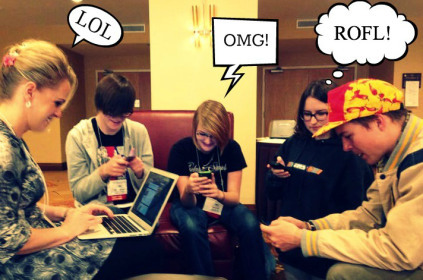
#FUTUREREADERS
Thing is, Barnes & Noble could have learned a thing or ten from iTunes and RedBox. Times have changed and so have consumer behaviors. We are an OnDemand world. In the old days, we had to go to the merchant. These days, the merchant comes to us.
CLICK TO BUY!
When I finish one book, my Kindle magically delivers other books like the one I just read. Instead of having to wear pants, brave traffic, find a parking spot, wade through the mall, wander the store, on and on and on…
One click and done.
I just got a new Kindle and O…M…G. They have a new feature where instead of my Kindle simply hibernating with some blasé picture, it has an advertisement for a book. I have bought more books in the past week than in the past year because instead of me having to use a bunch of brainpower sifting through a gazillion choices?
Amazon has done my thinking for me.
We Buy What We KNOW
What happens with authors who don’t have that neat Amazon ad to direct purchases? In a marketplace with fewer and fewer points of sale with more competition than ever in human history, how do we sell books?
We have to create a brand.
We live in a time where we have more choices than ever. I don’t know about you guys, but I have a Love-Hate relationship with Central Market. Granted, it is AWESOME. Central Market is such a cool grocery store that tourists actually visit. Every aisle is a foodie’s dream. They don’t just have “olive oil”, they have 700 varieties of an olive oil “experience”.
And there I stand for 40 minutes just trying to make a freaking decision about WHICH olive oil to buy…and end up just buying plain old Bertolli that I could have purchased at the Kroger’s down the road and that I certainly didn’t need to dress up, drive to Central Market and nearly get run over by a soccer mom in a Mercedes SUV to purchase.
Now, the only time I go to Central Market is if I need something specific because with all the choices? It would take me a day and a half to shop…and I’d need sherpas and GPS and wine that I brought myself because I can’t even figure out what kind of freaking OLIVE OIL I want, you think aI could choose WINE…?????
*breathes in paper bag*
Yet, with books, this is what is going on with consumers, even those of us who are avid readers. Just like we will forgo the pasta sauce with truffles, a virgin sacrifice and the distilled souls of Italian grandmothers in favor of good old-fashioned Ragu…
We will shy away from authors we don’t know in favor of those we DO know.
This is where social media and branding become almost as important as the book we write and have for sale. We could have a book so brilliant it makes angels weep, but if no one knows it is there? We are left with Schrodinger’s Novel.
We Must Always Be Cultivating the Fans of the Future

Image via Pink’s Galaxy Flickr Creative Commons
It is incumbent upon us as authors to be in charge of our careers for the short-term as well as the long-term. If you plan on selling books in ten years realize that Millenials will be your audience and they practically teethed on a keyboard. They’ve grown up with social media, so if we aren’t there?
We do not exist.
Smart authors understand this. Don’t believe me, go check out Anne Rice on Facebook and Twitter. She is a social media rockstar and that’s why she continues to be a legend.
It’s All Good
Before anyone has a panic attack, author branding is not that hard. Also, done properly, it isn’t all that time-intensive either. But, I teach branding and social media very differently namely because I am a writer FIRST. I don’t imagine most of you are just doing this writing thing until your dream job in high pressure sales comes through.
Didn’t think so.
I will blog more on this in the weeks to come, but I do recommend picking up my book Rise of the Machines–Human Authors in a Digital World. Platforms take time to build so the sooner we start the better. Yes, I published the book a couple years ago, but unlike other “social media experts” I teach an approach that never changes because it is based on people and not technology.
Read Shakespeare. Humans don’t change. And, since humans don’t change, it only makes sense to build a platform based on people, not algorithms and “gaming” the system.
I also have zero interest in changing your personalities. I appreciate what it is like to be a creative introvert with severe social anxiety (I used to shop at 2 a.m. because crowds gave me panic attacks). My goal is to change your behavior, NOT your personality. I am also here to give you a way to create a powerful brand for FREE and still have plenty of time to do the most important part of the job.
Write more books.
So we will start chatting more about branding. What to do, what not to do. What’s a time suck and so forth.
What are your thoughts? Do you miss the small bookstores? I really miss B. Dalton. Do you still dream of seeing your book for sale on a table at B&N? Have you been powerless in the face of Kindle book ads? I had to sign up for a Kindle Unlimited membership before I had to go to a loan shark to pay for my habit. Are you overwhelmed by social media or has it given you a lifeline?
I LOVE hearing from you!
To prove it and show my love, for the month of SEPTEMBER, everyone who leaves a comment I will put your name in a hat. If you comment and link back to my blog on your blog, you get your name in the hat twice. What do you win? The unvarnished truth from yours truly. I will pick a winner once a month and it will be a critique of the first 20 pages of your novel.
For those who need help building a platform and keeping it SIMPLE, pick up a copy of my latest social media/branding book Rise of the Machines—Human Authors in a Digital World on AMAZON, iBooks, or Nook.


September 22, 2015
To Prologue or NOT To Prologue? That is the Question

Image via Flikr Creative Commons, via Mikko Luntiala
Publishing, like most other things, is not immune to fashion. This is what makes teaching craft a moving target. What is en vogue today could be passé tomorrow. And yes we are artists, but I believe most of us are artists who’ve grown rather fond of eating. This means we do need to keep audience tastes in mind when we are “creating” since they will be the ones who fork over cold hard cash.
Today we will touch on a question I get a lot from new writers.
To prologue or not to prologue? That is the question.
The problem with the prologue is it has kind of gotten a bad rap over the years, especially with agents. They generally hate them. Why? In my opinion, it is because far too many writers don’t use prologues properly and that, in itself, has created its own problem.
Because of the steady misuse of prologues, most readers skip them. Thus, the question of whether or not the prologue is even considered the beginning of your novel can become a gray area if the reader just thumbs pages until she sees Chapter One.
Before we get started, I will say that genre often dictates whether or not to use a prologue. But, keep in mind that, even if our genre—I.e. thriller—allows for a common use of prologues, it still is wise to learn to do them well ;) .
So without further ado…
The 7 Deadly Sins of Prologues
Sin #1 If your prologue is really just a vehicle for massive information dump…
This is one of the reasons I recommend writing detailed backgrounds of all main characters before we begin (especially when we are new writers). Get all of that precious backstory out of your system.
This is a useful tactic in that first, it can help us see if a) our characters are psychologically consistent, b) can provide us with a feel for the characters’ psychological motivations, which will help later in plotting.
I have a little formula: background–> motivations –>goals–>a plan–>a detailed plan, which = plot and c) can help us as writers honestly see what details are salient to the plot.
This helps us better fold the key details into the plotting process so that this vital information can be blended expertly into the story real-time.
Many new writers bungle the prologue because they lack a system that allows them to discern key details or keep track of key background details. This makes for clumsy writing, namely a giant “fish head” labeled prologue. What do we do with fish heads? We cut them off and throw them away…unless you are my mother’s Scandinavian family and then they make soup *shivers*.
Sin #2 If your prologue really has nothing to do with the main story.
This point ties into the earlier sin. Do this. Cut off the prologue. Now ask, “Has this integrally affected the story?” If it hasn’t? It’s likely a fish head masquerading as a prologue.
Sin #3 If your prologue’s sole purpose is to “hook” the reader…
If readers have a bad tendency to skip past prologues, and the only point of our prologue is to hook the reader, then we have just effectively shot ourselves in the foot. We must have a great hook in a prologue, but then we need to also have a hook in Chapter One. If we can merely move the prologue to Chapter One and it not upset the flow of the story? Then that is a lot of pressure off our shoulders to be “doubly” interesting.
Sin #4 If your prologue is overly long…
Prologues need to be short and sweet and to the point. Get too long and that is a warning flag that this prologue is being used to cover for sloppy writing or really should have just been Chapter One.
Sin #5 If your prologue is written in a totally different style and voice that is never tied back into the main story…
Pretty self-explanatory.
Sin #6 If your prologue is über-condensed world-building…
World-building is generally one of those things, like backstory, that can and should be folded into the narrative. Sometimes it might be necessary to do a little world-building, but think “floating words in Star Wars.” The yellow floating words that drift off into space help the reader get grounded in the larger picture before the story begins. But note the floating words are not super-detailed Tolkien world-building.
They are simple and, above all, brief.
Sin #7 If your prologue is there solely to “set the mood…”
We have to set the mood in Chapter One anyway, so like the hook, why do it twice?
The Prologue Virtues
Now that we have discussed the 7 Deadly Sins of Prologues, you might be asking yourself, “So when is it okay to use a prologue?” Glad you asked.
Virtue #1
Prologues can be used to resolve a time gap with information critical to the story.
Genre will have a lot to do with whether one uses a prologue or not. Thrillers generally employ prologues because what our hero is up against may be an old enemy. In James Rollins’s The Doomsday Key the prologue introduces the “adversary” Sigma will face in the book. Two monks come upon a village where every person has literally starved to death when there is more than an abundance of food.
Many centuries pass and the very thing that laid waste to that small village is now once more a threat. But this gives the reader a feel for the fact that this is an old adversary. The prologue also paints a gripping picture of what this “adversary” can do if unleashed once more.
The prologue allows the reader to pass centuries of time without getting a brain cramp. Prologue is set in medieval times. Chapter One is in modern times. Prologue is pivotal for understanding all that is to follow.
Prologues are used a lot in thrillers and mysteries to see the crime or event that sets off the story. Readers of these genres have been trained to read prologues and generally won’t skip. The serial killer dumping his latest victim is important to the story. It’s a genre thing. Yet, still? Keep it brief. Reveal too much and readers won’t want to turn pages to learn more.
Virtue # 2
Prologues can be used if there is a critical element in the backstory relevant to the plot.
The first Harry Potter book is a good example of a book that could have used a prologue, but didn’t (likely because Rowling knew it would likely get skipped). Therese Walsh in her blog Once Before A Time Part 2 said this:
J.K. Rowling’s Harry Potter and the Sorcerer’s Stone is told in a close 3rd person POV (Harry’s), but her first chapter is quite different, told when Harry is a baby and switching between omniscient and 3rd person POVs (Mr. Dursley’s and Dumbledore’s). Rowling may have considered setting this information aside as a prologue because of those different voices and the ten-year lag between it and the next scene, but she didn’t do it. The info contained in those first pages is critical, it helps to set the story up and makes it more easily digested for readers. And it’s 17 pages long.
This battle is vital for the reader to be able to understand the following events and thus would have been an excellent example of a good prologue. But, Rowling, despite the fact this chapter would have made a prime prologue still chose to make it Chapter One so the reader would actually read this essential piece of story information.
Food for thought for sure.
Yes, I had Seven Sins and only Two Virtues. So sue me  . That should be a huge hint that there are a lot more reasons to NOT use a prologue than there are to employ one (that and I didn’t want this blog to be 10,000 words long).
. That should be a huge hint that there are a lot more reasons to NOT use a prologue than there are to employ one (that and I didn’t want this blog to be 10,000 words long).
Prologues, when done properly can be amazing literary devices. Yet, with a clear reader propensity to skip them, then that might at least make us pause before we decide our novel must have one. Make sure you ask yourself honest questions about what purpose these pages are really serving. Are they an essential component of a larger whole? Or are you using Bondo to patch together a weak plot?
But, don’t take my word for it. Over the ages, I’ve collected great blogs regarding prologues to help you guys become stronger in your craft. These are older posts, but timeless:
Once Before a Time: Prologues Part 1 by Therese Walsh
Once Before a Time Part 2 by Therese Walsh
Agent Nathan Bransford offers his opinion as does literary agent Kristin Nelson
Carol Benedict’s blog Story Elements: Using a Prologue
To Prologue or Not To Prologue by Holly Jennings
If after all of this information, you decide you must have a prologue because all the coolest kids have one, then at least do it properly.
What are some of the questions, concerns, troubles you guys have had with prologues? Which ones worked? Which ones bombed? What are your solutions or suggestions?
I LOVE hearing from you!
To prove it and show my love, for the month of SEPTEMBER, everyone who leaves a comment I will put your name in a hat. If you comment and link back to my blog on your blog, you get your name in the hat twice. What do you win? The unvarnished truth from yours truly. I will pick a winner once a month and it will be a critique of the first 20 pages of your novel.
For those who need help building a platform and keeping it SIMPLE, pick up a copy of my latest social media/branding book Rise of the Machines—Human Authors in a Digital World on AMAZON, iBooks, or Nook.


September 16, 2015
Is Perfectionism Killing Your Writing Career?

Image via Amber West WANA Commons
As y’all know, Spawn is in Kindergarden and now we have this lovely new experience called, “Helping with Homework.” Hubby, God love him, is new at this “being a Dad and helping with homework” stuff and has his own learning curve. He was at the kitchen table helping Spawn write out letters while I did laundry and cooked dinner. After a while, though, I noticed this homework thing was taking a really…I mean really long time.
Finally, I told Hubby I’d take over while he went and got a shower and when I looked at Spawn’s work, I immediately knew what was going so sideways.
Spawn wasn’t (yet) being graded on how well he wrote the letters. He simply had to DO them.
Hubby was trying to be a good dad so he was making Spawn erase “mistakes” and do the letter over. And, YES, the kid had a lot of nice looking Es but it was taking forever.
What Hubby didn’t appreciate being new to this “teaching thing” was that Spawn’s just started learning to write and he is strengthening the fine muscles in his fingers and hands. His writing WILL look that bad for now. It’s no shock to the teacher. And, if his writing doesn’t improve? HA! Doctor!
Anyway, when I took over, Spawn wrote a letter and it was, of course, wonky and too small and off-center, but when he went to erase it, I stopped him and said the words I wish I would have learned MANY years ago:
“Perfect is the enemy of the good. Just keep going.”
Because he left his “mistakes” he then had a way of gauging the letters that followed and as he went, I noticed that his writing got better. Instead of being paralyzed that his writing wasn’t perfect, he was able to move forward. So long as it was legible?
Eh, close enough for government work.
Okay, so all was well and good and then the next day I get an e-mail I’d been waiting for. A year and a half ago, I wrote a mystery novel, but then I got seriously ill with Shingles. Shopping this novel just derailed, but now that I was healthy again? I was ready to get this sucker GONE.
Since we all suck at being honest about our own work, I begged an agent friend of mine to read it and give me a professional opinion. It wasn’t a genre she repped or even especially liked, but she is a rockstar who loves me and I trusted her to deliver the hard truth.
Kristen, don’t quit your day job. Stick to editing.
I sent her my novel about a week and a half earlier and of course had been hovering over my e-mail like a vulture over a baked roadkill.
*hits refresh 920th time*
When I open the e-mail, there is the news I’d been waiting for. My novel was solid and firmly in the submission phase.
Yay, OMG! OMG! Wait….*brakes screech*
Oh crap. I have to write a query letter.
I haven’t had to write a query letter for fiction since the Bush Administration. So there I am, uber-blogger-writing-expert-extraordinaire googling How to Write a Query *hangs head in shame*.
WHY?
Because self-doubt descended on me like a teenage boy on a pizza. I help with query letters ALL THE TIME. I can write them for other people in about ten minutes. Suddenly, when I had to do it for MY book? It would have been easier to perform brain surgery remotely from space using a Clapper and a vegetable peeler.
Because if I have an opportunity to over think and overcomplicate something simple? SIGN ME UP!
So there I was writing all these idiotic versions of my query.
My writing style can be compared to the works of Janet Evanovich and…
and…
and…
…and the BIBLE because my words were inspired by ANGELS.
Kill. Me. Now.
After the 78th version of this query? I am done. Put a fork in me.
I felt all smart and virtuous telling Spawn to just keep moving, to not get fixated on perfection, but what was I doing?
No agent is asking for a perfect query letter. They want an interesting query letter.
We writers have to be really really careful about worshipping perfection, and I think fiction can be far more vulnerable because it is far more subjective. There comes a time when we simply have to SHIP. Just let it go. Time to move on to something new. We could edit forever. This applies to blogs, books, query letters and eyeliner.
The world does not reward perfect books, it rewards finished books.
Maybe it is time to let go of that first novel you’ve been working on for the last year three years six years. You know what? Maybe it just sucks and that is okay.
My first novel seriously sucked. Heck, my first novel was being used in Guantanamo Bay to break terrorists until it was banned by the Geneva Convention.
I’ll tell you where the bomb is, just not another chapter of that BOOOOOK!
These days my first novel is in the garage because it pees on the rugs and chews on the furniture.
But remember Spawn and his homework? What was the objective? Finish the letters. It never said to make them super pretty and perfect.
Same with becoming a writer and the first novel.
Very often, our first novel is a learning curve. Just like Spawn is developing his fine writing muscles, we are too ;) .
The first novel is our first attempt to do something most mere mortals can’t. Can we sit and finish a work spanning 60,000-100,000 words?
Or, in my case? 178,000 words.
Gimme a break! I was NEW! :P
Yes, I was that writer. The one the agents talk about? It’s me. I am the “Alligator-in-the-Sewer” of the publishing world. I am real. I really queried a 178,000 word novel that was all genres and written for everyone to love and that would make an awesome movie and I already had started the screenplay. Did I mention merchandising?
But what I didn’t understand was that novel wasn’t meant to be queried or even published. It had already served it’s purpose and it took me a long time and way too many fruitless revisions to understand that. One of the best lessons I have learned in my career is to simply let go.
Shop it ship it or kill it but move forward.
Write the first book and move on. Write another and another. Sure, the first one might suck, but each one will suck a little less. We learn by doing. Writers only improve by writing MORE.
Perfect is the enemy of the good.
If we hope to be successful at this writing thing, we must master two diametrically opposite skills—latching on and letting go. We can’t finish if we don’t sink in our claws, but we also can’t finish if we fail to ever let go.
Virtually every long-term successful author didn’t make it with ONE novel. We make a good living at writing by writing MANY novels. But, if we don’t get good at shipping? Odds are we will never be able to write full-time. So breathe and just move forward. It gets easier.
What are your thoughts? Do you find yourself too concerned with being perfect? Do you think you allow perfectionism to feed you procrastination? Are you still trying to “fix” that first novel and haven’t let go? Do you have trouble moving forward?
I LOVE hearing from you!
To prove it and show my love, for the month of SEPTEMBER, everyone who leaves a comment I will put your name in a hat. If you comment and link back to my blog on your blog, you get your name in the hat twice. What do you win? The unvarnished truth from yours truly. I will pick a winner once a month and it will be a critique of the first 20 pages of your novel.
August’s WINNER is lonestarjake88. Please send your 20 pages (2500 words) to kristen at wana intl dot com in a WORD document. Double-spaced and one-inch margins and CONGRATULATIONS!
For those who need help building a platform and keeping it SIMPLE, pick up a copy of my latest social media/branding book Rise of the Machines—Human Authors in a Digital World on AMAZON, iBooks, or Nook.


September 14, 2015
Using Dialogue to Create Dimensional Characters
So last time we talked about the basics in regards to dialogue and once we grasp the fundamentals—like proper punctuation—we then can focus more on elements of style. How we deliver the dialogue.
We can tell a lot about people by the way they speak. What people say or don’t say speaks volumes. As the writer, it is our job to understand our characters and to know who they are and how they think. We have to master the art of empathy. If we don’t, our dialogue will all sound like US talking. Writing, in many ways is a lot like method acting. We have to crawl inside the head and the psyche of our cast.
Not as easy as it might seem.
Dialogue done well is the stuff of legends though. Think of favorite movies. Why do we love them SO much? Very often…dialogue.
My name is Inigo Montoya. You killed my father. Prepare to die.
Social Roles—The Broad Strokes
Whether we like it or not, most of us will fall into some kind of social category with the way we speak. The way we speak will tell others a lot about who we are, our job, our background, level of education and even where we exist socially.
Don’t believe me?
How many of you were once young and wild and free and swore you would never be like your parents? Then one day you heard, “Because I said so, that’s why” fly out of your mouth?
“Why can’t you just do it the first time?”
“I didn’t ask you if you wanted to do it.”
I am bee-bopping along and suddenly hear my mother….
“Well, Spawn, when the mind is stupid, the body suffers.”
Shoot. Me. Now.
No matter how much we try, we are helpless in the face of mimesis. But, that isn’t such a bad thing. This actually makes it easier to do what we do. Since we’ve been around moms, we know how they talk. We can emulate the lingo. We know how teenagers, grandparents, grouchy neighbors, picky librarians, and con-artist family members all talk.
Through these “roles” we gain the broad strokes of what a character should “sound” like. This will help our characters ring true in the mental ear of the reader. There is nothing wrong with having characters who fit into a tidy box. They can still be interesting and unique even in that role.
Yes, I am a mother and I say all the stuff I swore I would never say.
No is just a part of life.
I also play XBox with Spawn and say things like, “Burst-fire! Conserve your ammo!” “You can’t kill a zombie like that!”
Thus, even though a lot of what I say would be very prototypical “Mom Talk” there are elements of how I speak that make me unique within that subset. Not all moms shoot for sport, practice Jiu Jistu and randomly quote Monty Python. Spawn’s mom, however, DOES.
But this is is when we get into the…
Character—The Fine Strokes
Moms say things many other moms say, but each mom is unique. That is the case with most characters. If we don’t take time to really think about who each character IS, we can run the risk of a character sounding like a stock character.
Recently I read a YA and only finished it because I paid full-price. But the biggest reason I had a tough time getting into the story was that all the characters were blasé.
Each character talked like a stereotype. The broad strokes were there, but there was no nuance. Thus, I was left with a cast of characters who were utterly forgettable.
How do we get fine strokes?
Can we buy some on eBay?
This is a tough one to answer. The fine strokes can take years to master. We have to learn to be excellent listeners. We have to learn how to look beyond what people are saying. We have to become masters of empathy and we must study people. Beyond this, though, what is it that transforms a plot-puppet into a 3-D person?
I believe it is in our idiosyncrasies and our contradictions.
Idiosyncrasies
An Idiosyncrasy is a peculiarity that is specific to one person. For instance, last time I mentioned the no-no about having every character speak in full sentences. Most of us don’t speak in full sentences so it rings untrue when everyone is using full sentences. BUT, some people DO speak in full sentences. That would be an idiosyncrasy and it’s one that is used regularly to convey highly intellectual characters—Ie. Dr. Sheldon Cooper.
A character who is foreign might not use contractions. A character who has OCD might always repeat verbs. A character who is advanced in years might never answer directly, but always answer in colorful parables.
I wrote a really funny character who constantly used malapropisms.
You just don’t cheat on your wife. When you get hitched, you promise to be faithful. You know. Monotonous.
We all have sayings and filler words that are unique to each of us. But adding these subtle details, now we have characters who are far more dimensional.
So we might have a mother who is saying all kinds of mom-like things…only she is unique because she is bad about smashing words together and speaks in hyperbole.
Eat your vegetables and don’t correct me. It’s very condensending.
Condescending.
I know what I said, Mr. Smarty Pants. Hurry up before I trade you to the Jones family for a puppy. At least the puppy would have some respect.
Add Some Layers
Remember that most humans are actually a unique blending of experience and roles. Yes, we might have a mom who is talking like a mom, but what else is she? A mom who is a Japanese violinist would probably talk differently than a mom who is a cop and grew up in Brooklyn.
Culture
Culture impacts a lot more than we might realize. I was born in Texas, but reared by a Yankee mom who is very direct and no-nonsense. I have run into all kinds of trouble with Southern women who feel I am rude. Conversely, I get short with Southern women because I am aging and don’t have time for all the niceties.
My roommate in college was from Georgia and we went round and round and round. She’d say:
Roommate: Kristen, do you think the trash needs to go out?
Me: Nah, looks good to me *keeps going*
Because her culture dictated it was more polite to hint and suggest? I missed most of what she wanted because I was always direct. If I wanted someone to take out the trash, I simply asked.
But here is an extra lesson in dialogue. Just from this example, can you see how conflict can arise simply from expectations? She believed she was asking me to take out the trash and believed that I was ignoring her. Conversely, I couldn’t figure out why she wanted an opinion on the state of our garbage so often. Why didn’t she just ask me to take it out? I would have happily obliged.
Self-Image
How does your character feel about him/herself? A low self-image might make a person a people pleaser. Maybe she is always agreeing with everyone and terrified to have her own opinion. Maybe the character talks too much, tries too hard, never asks about others.
If a character is selfish, he might brag all the time, or have to outdo everyone else in the conversation.
That’s great you caught a fish, but you were on a lake. Now go deep sea fishing. That’s real fishing. I once struggled with a fifteen foot shark for three hours….
Maybe the character is always interrupting others. Maybe the character uses profanity or quotes bible verses all the time. Or both.
Contrast
Sometimes we can use dialogue to make contrasts. Contrasts are very interesting and say a lot about our character. A great example would be Elmore Leonard’s character Boyd Crowder (refer to television series Justified). Now, Boyd fits into a broad-stroke category of a hillbilly. He has a deep southern accent, works with his hands, drives a ratty truck, wears boots, and drinks like a fish.
But what makes Boyd a fascinating character study, especially for dialogue, is he is unexpected. He is a fascinating contrast. Though he is a redneck (and plays this up for his own ends) he uses a twenty-dollar word when a ten cent one would do. He speaks very colorfully. If you ask him the time, he will tell you how to build a watch.
Not only is his speech idiosyncratic, but it is a very unique contrast. One usually doesn’t expect a hillbilly to use words most of us would have to look up in a thesaurus.
Show Don’t Tell
Dialogue is HUGE, HUGE, HUGE for Show Don’t Tell.
Instead of telling us a character is a certain way, SHOW us by how she talks and what she says.
A gossip.
“Now, for the record, I’ve never seen her drink, but she always looks so tired. My brother-in-law always looked that way because he was throwing them back in secret.”
A self-involved jerk.
“Sure, Babe. After I meet with my client, how about I meet you for that cute little college thing you’re doing. What was it again? Art history?”
Y’all get the gist. Now go have fun with it!
All of this is to say that dialogue is one of the most powerful tools for showing who a character is, who they are hiding and maybe even who they could be with a little help from us (Writer-God). Next time, we will dig a bit deeper into dialogue. Who knew there was so much to this? What are your thoughts? What other suggestions do you have for authentic-sounding dialogue?
I LOVE hearing from you!
To prove it and show my love, for the month of SEPTEMBER, everyone who leaves a comment I will put your name in a hat. If you comment and link back to my blog on your blog, you get your name in the hat twice. What do you win? The unvarnished truth from yours truly. I will pick a winner once a month and it will be a critique of the first 20 pages of your novel.
August’s WINNER is lonestarjake88. Please send your 20 pages (2500 words) to kristen at wana intl dot com in a WORD document. Double-spaced and one-inch margins and CONGRATULATIONS!
For those who need help building a platform and keeping it SIMPLE, pick up a copy of my latest social media/branding book Rise of the Machines—Human Authors in a Digital World on AMAZON, iBooks, or Nook.
lonestarjake88


September 10, 2015
9 Ways to Improve Your Dialogue
Sorry to be away so long. Been a weird couple of weeks getting Spawn ready for the BIG K—Kindergarten. Uniforms and doctors and immunizations and vision/hearing tests (and yes, apparently he CAN hear, he is just ignoring us). I am still unaccustomed to so much quiet. For those who are curious, YES I was going to homeschool, but we found a super cool private school where he is in a class of TEN and he loves it. He was getting lonely and kept asking to go to school so he could be with other kids, so I figured we’d give it a shot. So far so good.
He is now Spawn, The Most Interesting Kid in the World….
Back to writing…
Today we are going to talk about a subject that I don’t think I have ever blogged about. Dialogue. Great dialogue is one of the most vital components of fiction. Dialogue is responsible for not only conveying the plot, but it also helps us understand the characters and get to know them, love them, hate them, whatever.
Dialogue is powerful for revealing character. This is as true in life as it is on the page. If people didn’t judge us based on how we speak, then business professionals would bother with Toastmasters, speaking coaches or vocabulary builders. I’d imagine few people who’d hire a brain surgeon who spoke like a rap musician and conversely, it would be tough to enjoy rap music made by an artist who spoke like the curator of an art museum.
Our word choices are reflective of WHO we are. Dialogue can not only show age and gender. It can elucidate level of education, profession, personality, ego, wounds, insecurity, and on and on and on.
In fact dialogue is so powerful that one way we know we have done our job as a writer is when we can remove all dialogue tags and the reader still knows which character is talking. This said, there are a LOT of newbie errors I see when it comes to writing dialogue and that’s what we are going to talk about today.
#1 Punctuate Properly
When it comes to dialogue, we need to make sure we are punctuating properly. This might seem like a picky matter, but improper dialogue punctuation is a quick way to end up in a slush pile. If a writer doesn’t yet know how to punctuate dialogue correctly, then most agents (or even readers) simply aren’t going to commit any more time. Also, if you are paying good money for an editor, they have a hard time getting to the MEAT of your story if they are spending all their time fixing disastrous punctuation.
When I get samples from new writers, I see a lot of this:
“Have a nice day” she closed the door and that was when Kristen had to spend the next few hours repairing punctuation.
“Have a nice day.” She closed the door blah blah blah….
OR
“Have a nice day,” she said. She closed the door blah blah blah…
The comma goes INSIDE the end quote mark and then we add a tag. If there is NO tag word (said, asked) then we insert a PERIOD.
DO NOT use actions as tags. Why? Because actions are actions…not tags.
“Have a nice day,” she closed the door said.
For all the neat ways dialogue is punctuated, refer to a handy dandy Strunk & White ;) ,
#2 No Weird Dialogue Tags
This goes with the “no action tags” idea.
“I have no idea what you mean,” Kinsey snarled.
“You know exactly what I mean,” Jake laughed.
NO.
Characters can say things or ask things but they can’t smirk, snarl or laugh things. Again, when agents, editors, or even savvy readers see these strange tags, it is a red flag the author is green.
#3 Stick to Unassuming Tags
When using tags, keep it simple— said, asked, replied (maybe). Why? Well, I hate proffering rules without explanation so here goes.
Simply? When we add those creative tags on the end, we are coaching the reader. Our dialogue should be strong enough alone to convey the tone we want. When we coach the reader, we are being redundant and more than a tad insulting to the reader.
“You have some nerve showing your face,” she spat.
See what I mean? By adding the “she spat” I am essentially telling you that I worry you aren’t sharp enough to know this character is upset.
But, I am betting the dialogue alone—“You have some nerve showing your face”—was plenty for you guys to give the appropriate tone of voice in your head. I really didn’t need to add the “she spat.”
I know that keeping to simple tags seems harsh, but if we have done our job writing dialogue, the tags will disappear in the reader’s mind. The dialogue will simply flow.
Additionally, if we write using Deep POV, we don’t even need/use tags.
“I have no idea what you mean.” Kinsey refused to look at him and polished the wine glass so hard she wondered if she’d bore a hole clean through.
See how the character is DOING something that tells us the tone of the dialogue. Remember that communication is about 90% is nonverbal. Body language is a big deal.
Notice we are showing and not telling. Instead of spelling out that Kinsey is irritated, we have her DOING something that shows us she is ticked and trust the reader to fill in the blanks.
#4 Do NOT Phonetically Spell Out Accents
Yes, when we dust of old volumes of literature we see that the writers (I.e. Twain) wrote out dialogue phonetically to show the accent of the character speaking.
BUT…Herman Melville also spent over a hundred pages talking about whales for the same reasons. Most people lived and died in isolation. Travel was reserved for the very rich. Photographs and paintings were rare. There was no television, radio or Internet.
Just like Melville’s readers could live an entire lifetime without seeing the ocean (let alone a whale), Twain’s audience in Europe likely would never travel to the rural American South. Thus, they would have no concept of what a Southern accent “sounded” like. Therefore, in fiction, it was perfectly acceptable to phonetically write out how someone would have talked.
These days, if we are writing a character who has an Irish brogue or a Southern drawl or a Cockney accent, we no longer need to spell it out phonetically. The reason is that there has been so much entertainment (movies, etc.) that we know what an Irish brogue should sound like and when we “spell it out” for the reader, it makes the dialogue cumbersome.
#5 DO Feel Free to Use Unique Words, Expressions or Idioms
I write a lot of characters who are Texans. It’s true I don’t need to write out the Texas accent phonetically, but I can add in some terms and expressions to keep the reader “hearing” a Texan in her head without making my dialogue weird.
“Y’all won’t believe this. Delroy got a job. A J-O-B.”
“Who’d hire him? He’s useless as ice trays in hell. ”
Feel free to use a couple of words that convey an accent—ain’t, gonna, bloody—just avoid spelling it out in entirety or risk frustrating readers.
#6 DO NOT Have Characters Constantly Calling Each Other By NAME
I see this one a lot and it is seriously weird.
“Biff, what are you doing?” Blane asked.
“Why Blane, I am making a present for Buffy. You know how Buffy is about her birthday. What are you doing Blane? Are you having lunch with Beverly?”
Okay, so I am being a bit silly here to make a point, but how often do you call the other person by name when talking? Who does this? Worse still, who does this over and over and over, especially when there is only one other person in the room? Try this in real life.
Me: Shawn, why are you home so early? I thought you’d be at work.
Hubby: I had to run an errand, Kristen.
Me: Well, Shawn I have to run to the grocery store.
Hubby: Kristen, that is…
Okay, I am giggling too much. Y’all get the gist.
#7 Do NOT Write Dialogue in Complete Sentences
My above examples are kind of a twofer. Not only is the dialogue seriously strange with everyone using a proper name, but notice all the dialogue is in complete sentences. Most people don’t talk that way. If we do, we sound like a robot or a foreigner with a rudimentary grasp of the language.
Is it wrong to have dialogue in complete sentences? No. But usually it is ONE character who talks that way and it is an idiosyncratic trait particular to THAT character. Ie. Data from Star Trek or Sheldon from Big Bang Theory.
#8 Avoid Punctuation Props
Avoid overusing exclamation points and ellipses. Again, if our dialogue is strong enough, readers will “get” when a character is yelling or pausing. Especially avoid being redundant with the punctuation and the tags.
“Get out of my house!” she yelled.
Really? No kidding.
And remember…that…when we use…a lot….of ellipses…we are being annoying….not…….dramatic.
(And ellipses are only THREE dots and in some cases four ;) . Refer to Strunk & White or here is a lovely article from Grammar Girl.)
#9 NO “As You Know” Syndrome
I love David Mamet and I really love his Letter to the Writers of The Unit where he tears the writing team a new one. I love forwarding on his advice, because no one says it better and this is just as true for novels as it is for screenplays. I’ve included the best lines about dialogue:
Look at your log-lines. Any log line reading, “BOB AND SUE DISCUSS…” is NOT describing a dramatic scene.
Here are the danger signals. Anytime two characters are talking about a third, the scene is a crock of s&%$. Any time any character is saying to another “AS YOU KNOW” that is, telling another character what you—the writer—need the audience to know, the scene is a crock of s&%$*. ~David Mamet
No brain-holding. We are in the drama business, not the information business.
Later we will talk about ways that we can use dialogue to convey character. What are your thoughts? Questions? Who are your favorite authors regarding dialogue? I adore Sue Grafton. Every one of her characters just leaps off the page. I love great dialogue and have been known to highlight it just to keep it. What about you? Or am I the only dialogue geek?
I LOVE hearing from you!
To prove it and show my love, for the month of SEPTEMBER, everyone who leaves a comment I will put your name in a hat. If you comment and link back to my blog on your blog, you get your name in the hat twice. What do you win? The unvarnished truth from yours truly. I will pick a winner once a month and it will be a critique of the first 20 pages of your novel.
Will announce August’s winner next time because I am still playing catch up.
For those who need help building a platform and keeping it SIMPLE, pick up a copy of my latest social media/branding book Rise of the Machines—Human Authors in a Digital World on AMAZON, iBooks, or Nook.


August 27, 2015
Fueling the Muse—How to Mentally Prepare for “The Novel”
NaNoWriMo is kind of like Christmas for writers—suffering, drama, no sleep, heavy drinking and really bad eating habits. Also, we start talking about NaNoWriMo months before it actually happens.
If you are a new writer and don’t know what NaNoWriMo is? It stands for National Novel Writing Month and it is held for the duration of November. The goal is to write 50,000 words in a month.
In a nutshell, it gives a taste of what it is like to do this writing thing as a job, because for the professional writer? Every month is NaNoWriMo, so there is NO BETTER indoctrination into this business.
NaNo shapes us from hobbyists to pros, but we need to do some preparation if we want to be successful—finish 50,000 words and actually have something that can be revised into a real novel that others might part with money to read. Genre obviously will dictate the fuel required, but today we’ll explore my favorites.
Movies
I like watching movies to strengthen my plotting muscles. Unlike novels, screenplays have very strict structure rules. Also, it takes far less time to watch a movie than read a novel, so movies can be fantastic for practice (and also our goofing off can have a practical application :D ) .
Study plot points. Sit with a notebook and see if you can write out each of these major points in one to three sentences.
Normal World
First of all, in recent years, Normal World has become considerably shorter. Actually, it began that way. In Oedipus Rex, the story begins with the kingdom in a real mess. There is a plague upon the land and somehow the king is at fault.
It wasn’t until centuries later that writers at large stopped trusting the audience and Normal World went on and on and on and we followed a character from birth and then about a hundred pages in? Something went amiss and we finally got to the PROBLEM.
I believe this phenomena also coincided with when writers started getting paid by the word…. *raises eyebrow*
These days? People (readers) DO NOT have that kind of patience. Normal World is often seriously condensed or even missing.
But back to the movie you are watching for practice…
If there IS a Normal World (even a brief one) can you detail it in a sentence or two?
What was the character’s life like before it was interrupted by the BBT’s (CORE ANTAGONIST’S) agenda? I will use two divergent examples—World War Z and Steel Magnolias— to make my point and hopefully not spoil the more recent of the two. As far as Steel Magnolias? Y’all have had since 1989 to see it. Tough :P.
In World War Z, we meet a guy making breakfast for his family. He’s hung up some mysterious “old bad@$$ life” in order to be with his wife and kids.
In Steel Magnolias, we meet M’Lynn taking care of all the little details of her daughter’s wedding. She’s a Hover-Mother who takes care of the broken glasses, finds the right shade of pink nail polish, and stops Dad from shooting birds out of the trees. She’s a fixer and she’s in control.
Inciting Incident
This is the first hint of the BBT’s (Big Boss Troublemaker’s) agenda, the first tangible place it intersects with the protagonist’s life and causes disruption. Can you spot it?
In World War Z, we know from watching the background TV noise when they are having breakfast that a mysterious illness has already broken out. BUT, the virus has not yet directly intersected with the protagonist. When does this happen?
Jack and his family are in the car. He and his wife are on their way to take the kids to school when all hell breaks loose. It’s the first glimpse the protagonist sees of the looming threat, but aside from escaping with his family, he’s made no vested decision to get involved.
In Steel Magnolias the Inciting Incident happens in the beauty shop when Shelby’s blood sugars drop dangerously low and she goes into convulsions. Mom tries to help and Shelby swats her away (a hint at her future defiance). This is the first time the audience has met the BBT (Death/Diabetes manifested in the proxy Shelby).
Turning Points
Look for the major turning points in the movie. According to one of my FAVORITE craft books (Story Engineering) in Act One, the protagonist is running. He or she doesn’t know where exactly the conflict is coming from or precisely what IT is. Act Two, the protagonist is a Warrior. He or she has glimpsed the face of the BBT and fights back.
For instance, in World War Z, Jack knows it’s a virus creating “zombies” and he decides to return to the old job and fight. He agrees to search for Patient Zero in hopes they can find a cure.
In Steel Magnolias, M’Lynn shifts from Running (Here’s your orange juice. Have you checked your blood sugar?) to Warrior. Her daughter defies her and decides to get pregnant even though it could (and will) cost her life. Momma puts on full battle gear, determined to “control” her daughter’s fate. Diabetes has shifted from looming “controllable” threat to a ticking time bomb Mom still believes she can diffuse if she just tries hard enough.
Act Three, the protagonist shifts from Warrior to Hero.
Darkest Moment
This is right before the turning point to Act Three. This is where EVERYTHING is stripped away from the protagonist and it seems all is lost. The DM is the catalyst that shifts our protagonist from Warrior to Hero. Anyone else would give up the “fight” and go home, but not our protagonist.
In World War Z the protagonist is critically injured, he’s lost his family, outside help, and he’s faced with a crushing setback. There is no Patient Zero, at least no “clear” Patient Zero. It’s a dead end and it looks like time has just about run out for humankind.
In Steel Magnolias Shelby dies despite all of M’Lynn’s tireless efforts to control. She realizes she has no power. She never was in control and now she’s utterly lost.
Act Three/ Character Arc
How does the protagonist mentally shift over the course of the story? What was the critical flaw that would have held them back in the beginning, that would have made the protagonist “lose” if pitted against the BBT.
For Jack, he has to be willing to give up his family to save his family.
For M’Lynn, she has to admit she can’t control life or death in order to embrace the messiness of living.
How is the story problem resolved?
Pay attention to the Big Boss Battle. How has the protagonist changed? What decisions do they make (or not make)?
What is the outcome? How is the world set “right”?
In World War Z, Jack’s sacrifice gives humanity a fighting chance. In Steele Magnolias we see little Jackson (biological grandson) running and picking up Easter eggs (there is NO mistake that this story is bookended by Easter). Resurrection through Jackson is what ultimately defeats Death. Shelby lives on through her little boy.
Beyond Plot—What Else to “Study”
Dialogue
Great movies have great dialogue. Study it. How do characters talk? When I get submissions, one of the major problems I see is in dialogue. Coaching the reader, brain-holding, and characters simply talking in ways that are unrealistic. For instance, most of us, when having a conversation, don’t sit and call each other by name.
“But, Bob, if Fifi goes base-jumping she could die.”
“Yes, Joe, but it’s Fifi’s life and if she want’s to be stuff on a rock, it’s her decision, not ours.”
“I agree, Bob, but I love Fifi.”
“Joe, then tell her. Fifi’s craving attention.”
*rolls eyes*
Details
The devil is in the details. Details are like truffle oil. A little goes a LONG way and what a flavor enhancer! We writers don’t need to be super detailed about everything (because when we emphasize everything we emphasize nothing). But, a little goes a long way for good or for bad.
Get the details correct and we will love you. Get them wrong?
*brakes screech*
I am a gun person. If your character reloads using a clip? I will toss the book across the room.
Clips go in your hair. Magazines go in your gun.
I once read a book where the protagonist was putting the safety on her revolver. O_o
Unless the protagonist is a gun collector with some weird @$$ revolver only useful for collecting? No such thing as a safety on a revolver.
Shows me the author didn’t do some basic homework. Granted, details matter more in some genres versus others. Readers of a military thriller will be far pickier than those who read a high fantasy.
I recently had a writer who had me edit her first 20 pages. The story was excellent and had to do with a soldier in Afghanistan. Problem was, there were some main details that were simply wrong that were a pretty big deal (which I fixed for her). There was also a smaller, more obscure detail. The scene was set in 2004 and her protagonist was rescuing a fellow soldier from a burning vehicle. Unfortunately, the uniforms at that time were not flame retardant (a problem the military was forced to remedy in later years). In 2004, the fabric would have melted to him and the scene (in reality) would have played out very differently.
Granted, this detail about the uniforms is something only a military geek would likely know. But, if the writer worked that in???? Mad respect from the discerning reader.
If you need to know details, use social media. There are all kinds of military folks, law enforcement people, gun experts, history experts, medical personnel and people who do martial arts who are eager to help writers get thing RIGHT. I regularly have people write me about hand-to-hand, since I practice Brazilian Jiu Jitsu.
If you’re writing a military book, watch a friend play Call of Duty or Modern Warfare. Game designers use folks from Special Operations as consultants. They use DELTA Force, Green Berets, SEALS, etc for all the world-building, so why reinvent the wheel? Hollywood is notorious for getting this stuff dead WRONG, so if you want accurate military dialogue, games are better. Or, watch movies created by folks who’ve done their homework (I.e. Hurt Locker).
Setting
Movies are great for getting an idea of setting. Pay attention to the terrain and make notes. Work to be accurate.
Grossly inaccurate setting is distracting in books and film. I loved the recent mini-series Texas Rising, because DUH, I am a Texan. But the setting drove me BONKERS.
Just so y’all know, there are no Colorado-Large mountains anywhere near San Antonio.
*Kristen twitches*
So I hope all these tips will help y’all fill that muse to bursting and NaNo will be a LOT easier.
Another HUGE help for NaNo is a solid core story problem. I strongly recommend my antagonist class NEXT SATURDAY. If you’re not too strong at plotting? This class will make even the pantsiest of pantsers a master of story.
Anyway….
What are your thoughts? What are some things you do to prepare to write a novel? What movies have the best dialogue? Setting? Yes, I know I have ruined all movies for you. You will thank me later :P.
I LOVE hearing from you!
To prove it and show my love, for the month of AUGUST, everyone who leaves a comment I will put your name in a hat. If you comment and link back to my blog on your blog, you get your name in the hat twice. What do you win? The unvarnished truth from yours truly. I will pick a winner once a month and it will be a critique of the first 20 pages of your novel, or your query letter, or your synopsis (5 pages or less).
Before we go…. It’s BACK TO SCHOOL!:
Remember! THIS SATURDAY, I am running my Hooking the Reader—Your First Five Pages. Beginnings are crucial. As a long-time editor, I can tell almost every bad habit and story flaw in five pages. I rarely need over 20. This class helps you learn to see what agents and editors see and learn how to correct most common writing mistakes. I am offering additional levels if you want me to shred your first 5 or even 20 pages.
All classes are recorded and the recording is provided FREE with purchase.
Can’t wait to see you in class and read your writing!


August 13, 2015
What Went Wrong with Season 2 of “True Detective”? Cautionary Lessons for Writers
Most of the time, I try to use great writing as examples of what TO DO. But, some writing fails so epically, the best use of it is as a cautionary tale for other writers. We can use it to study what NOT to do.
True Detective Season Two does just that. I hate writing this because Season One was a masterpiece, and all I can think of is that maybe Nic Pizzolatto was a victim of his own success. It would be very daunting to top Season One. Scratch that. It would probably put most writers in a padded cell from nerves.
So what the heck went wrong?
This entire blog is nothing but a spoiler alert, but trust me. I am saving you ten hours of your life you can never get back. Before we talk about some of the basic writing issues that derailed the series, I believe there is one core reason this post fizzled faster than a bottle of New Coke.
Pizzolatto forgot the audience and remembered the critics.
Despite resounding praise for Season One, a handful of critics did take shots at Pizzolatto because they are critics and it is what they do. I wish Pizzolatto would have appreciated that most T.V. critics are being paid to watch the show and paid to have an opinion. They weren’t really his audience. The audience LOVED Season One. They bought t-shirts and quoted lines and tweeted and those were the people who mattered because it is basic math.
Fans waaaayyyy outnumber professional television critics. More fans means fans matter more.
This reminds me of the trouble we can get into as writers. This is actually one of the big dangers of attending a critique group.
Thing is, everyone at the table actually could love your pages, but I promise you that there will be ONE dude who will say something negative even if he doesn’t believe his own critique because he is like that jerk teacher who never gave an A because, “No one is perfect.”
Then, instead of the poor writer listening to twenty freaking people who thought the story was written with long-sought-after unicorn tears dripping from the quill made from a feather of a phoenix? Writer tries to appease Jerk Critic who just wanted to have something to criticize because he simply cannot stand the fact that someone in the group might have more talent.
Same with reviews on books. Unless an overwhelming percentage of people are complaining about the same things?
DO NOT WRITE FOR CRITICS.
I feel this is what happened to Season Two of True Detective.
Instead of appreciating the glowing feedback from fans and basking in the knowledge that his series fundamentally changed television…he listened to the critics and changed Season Two to suit them. Maybe not consciously, but yeah. And since I don’t want to spend too much time here, check out this Ben Travers’ fantastic article about it; How Nic Pizzolatto’s Temper Tantrum Toward Critics Ruined ‘True Detective” Season 2.
When we write for critics, more times than not, we end up with Franken-Novel, which I wrote about in my post Franken-Novel, Perfectionism & The Dark Side of Critique Groups.
So, About the Writing…
Every time I write about the “rules” of writing, inevitably, I get at least ONE commenter who wants to toss out the rule book, which is fine. But, I will reiterate that we can break rules but we do so at our own risk. Rules exist largely for readers (the audience) which I hope will become clear as we go through this.
Limit the Number of Characters
O…M…G. I lost count of how many named characters were in this series. I felt like I was trapped at family reunion, smiling at people and pretending I knew them and that I actually recalled that they were the second grandchild of my third-cousin-by-marriage.
Even in the finale, I had to pause because I had NO IDEA who the hell was killing off one of the main characters.
Is it the Russians? Who IS that? Honey, does he look Mexican to you or Armenian? I thought he was cool with the Armenians. Wait…nope, those are Mexicans. What the hell are THEY doing there?
Really, I was Being Serious…Limit the FREAKING Characters
Especially POV characters. I’ve run into this before with my writing classes. Some new writer who wants to get all “literary” demands she has seven POV characters. Oh-kay.
I used to argue. Now?
Have fun storming the castle *waves*.
Thing is, like meeting every person on the planet who is alive and who happens to share our DNA at ONE TIME (family reunion again) we cannot care about that many people. Not at ONE time.
Season 2 had four POV characters and only eight episodes. Basic math tells us this is a bad plan. When we try to cram too many POV characters into a story, we end up with extra parts that don’t matter because we simply don’t have time (and audiences lack the cranial bandwidth) to explore these characters.
Eight episodes is NOT enough time to fully develop a sympathetic mob boss with a barren wife, a hardboiled detective who is the daughter of a hippie guru who allowed her to be sexually abused as a child, a raging alcoholic dirty cop with guilt issues and child custody problems, and a disgraced CHP with a shady past in Afghanistan, mommy issues, and who is struggling with his sexuality.
Have mommy issues. Feel free to have daddy issues. Go for BOTH at your own risk. Every single POV character trying to reconcile extensive and complex child abuse?
Mob Boss Frank Seymon—abandoned and verbally, physically and emotionally abused.
Detective Bezzideres—emotionally abused by guru father, abandonment issues, was abducted and sexually abused (we think, because she never *really* remembers or if she did I forgot it)
Detective Ray Velcoro—emotionally and verbally abused by his father (in convenient flashback-dream-sequence-hallucination thingy)
Officer Paul Woodrugh—extreme verbal abuse by mother and hinted at sexual abuse by mom who is a bitter dancer pissed off that she gave birth to Paul and it cost her her dance career.
*head explodes*
What becomes problematic (other than the sheer NUMBER of POV characters) is that rather than the characters simply being deep (I.e. we can “get” they were abused in their past without the deets) the series teased out details of each character’s past as if these details were salient to unraveling the plot mystery.
We are given all kinds of details in a way that “suggests” we need to pay attention. Instead of Chekhov’s Gun? We got Osama Bin Laden’s gift-weapons-cache from the CIA circa the 80s.
If you show us a gun plot trail in Act One Episode One, use it by Act Three Episode EIGHT.
The same went for the problems these characters were facing in the present. Not only was the audience saddled with unraveling the past mysteries, but we had the characters’ present-drama dumped in our laps as if THIS stuff was salient to unraveling the plot mystery.
Hint: No. No it was not.
I waited SEVEN episodes for that Hollywood bi*&% who tarnished Woodrugh’s reputation to get her comeuppance.
*rails at the heavens*
Nope. They kill him off and just…stop his story.
AAAHHHHHHH!!!!
What happens when we try to develop everyone, is we develop no one. By the end, most of the characters were forced, contrived paper dolls. In fact, Officer Paul Woodrugh was a third-wheel. We could have cut his character and his storyline with zero negative impact to the overall kind-of-sort-of-plot.
Limit the Plot Layers
Some speculate that Pizzolatto was being reactionary to critics who claimed Season One wasn’t deep enough or complex enough. Here’s the deal. There is a difference between complex and complicated.
Lord of the Rings—> COMPLEX
Star Wars Prequels—> COMPLICATED
Complexity is birthed from simplicity. Complication is the child of confusion.
As we see when we try to create a log-line for each.
The Lord of the Rings Trilogy
A naive race who has never left home must travel vast distances and fight innumerable dangers to drop an evil ring in a special volcano located in the heart of enemy territory before darkness consumes the world.
Star Wars Prequels
A snarky slave kid who works on robots and races pods and who does something, then leaves home, maybe because Mom dies then something about Metachlorians and kid’s INFESTED with them. Then a dude with a painted face and Jedi and clones and much whining and more whining and then kid-now-whiny-adult-Jedi has no other choice but to slaughter a bunch of kids to save preggo wife and hell… I got nothing.
When it comes to the end of Season Two of True Detective, I haven’t been so confused since I forced myself to finish the Star Wars prequels.
Bluntly, I still really don’t understand the plot and don’t get who killed Casper. There were too many layers and subplots and hints and players in action. Maybe I am simply not smart or savvy enough for this series because…
I cannot unravel the Russian mob, the Mexican Mob, the Armenian underground, crooked cops, crooked politicians, crooked U.S. soldiers, crooked shrinks moonlighting as crooked plastic surgeons, crooked Hassidic Jews (NO, I AM NOT KIDDING), a land grab, toxic waste and environmental crimes, prostitution rings, secret sex parties, a missing five million dollars, sex trafficking, multiple coverups, several missing persons, blackmail, government fraud, gender issues, a missing hard drive, diamond theft, trafficking illegals, real estate fraud, and two orphaned kids with multiple identities out for the-most-complicated-revenge-plot-in-history in EIGHT EPISODES.
All we were missing in Season Two was the plot tangent about jaywalking. And some abused clowns juggling secretly gay ferrets.
And I hate picking on Pizzolatto because he is still my hero and is breathtakingly talented. ANY of these Season Two characters on his or her own could have been vastly complex and interesting and remarkable. But ALL at ONE time? That was the mistake.
Characters Should Stay in Character
Should characters be predictable? No. Can characters do unexpected things? Yes. Should characters do unexpected or stupid things simply because we (the writer) need them to? NO.
A ruthless mob boss who has survived into adulthood by being a master tactician and who GLORIOUSLY takes out the Russian mob in one showdown should NOT die because of rookie mistake/decision. He would give up the suit and then kill them all another day. He’d kill them, get back his diamonds and take all THEIR money, too.
When he refuses to give up the suit and some spear-carrying Mexican gang member not even important enough to warrant a NAME kills him?
We call foul and it ticks us off.
Characters Can’t BE Something They Aren’t
The whole sow’s ear/silk purse thing. Ray Delcoro’s son was as interesting as tax law no matter how many lines of Ray’s dialogue tried to tell us otherwise. The fact that Delcoro died (pointlessly) still trying to reach out to the World’s Most Uninteresting Kid still kind of ticks me off.
Someone NEEDS to Arc
Personally, I am with Blake Snyder. Everyone arcs! In True Detective Season 2? Other than Ray Delcoro being sober, every protagonist was the same in the end as in the beginning. No one was inherently changed by the crucible of plot.
The Plot Problem MUST Be Resolved
After gutting it through seven episodes, I was hoping that the season finale would finally tie up all these loose ends and that I would finally understand. Finally, there would be justice.
Nope.
Almost everyone dies for no good reason and the bad guys win. Casper’s murder becomes an afterthought and I can’t even tell you the names of his killers only that his murder is never officially solved. All the shady politicians get what they want and the dirty cops go on being dirty cops.
The season ends with Ani (one of the investigating detectives) in Belize (I think) talking to ANOTHER CHARACTER. A NEW CHARACTER. A reporter. She hands off all the evidence she collected for an expose (????) and is still uncertain anyone will see justice probably because she is as lost as the rest of us and hopes the reporter can figure it all out.
If we want to end our story like a French film and everyone dies? Ohhhh-kaaaaay, but we should give the audience a bone. The bad guys then should be punished. If we want the bad guys to win? I’m not fond of that kind of ending, but all right. It happens. But then we need to give the audience a personal WIN for the characters. Our protagonists cannot all die AND all fail. They cannot all die and fail the plot arc and the character arc.
If they do, the audience will want to stab our story IN THE FACE.
Why all of this is (to me) a shame is because there was so much rich material in this series to work with and it went to waste. I actually enjoyed Vince Vaughn as a bad guy and loved his character (cheesy lines and all).
But there IS some good news to this. When I watched True Detective Season One, it was so good I actually questioned if I could even write. After Season Two? I realize even geniuses like Pizzolatto make mistakes too ;) .
What are your thoughts? Did you watch both seasons? Were you just as confused by Season 2? Were the dudes with the bakery who forged the passports Armenian? I never could quite figure that out.
I love hearing from you!
To prove it and show my love, for the month of AUGUST, everyone who leaves a comment I will put your name in a hat. If you comment and link back to my blog on your blog, you get your name in the hat twice. What do you win? The unvarnished truth from yours truly. I will pick a winner once a month and it will be a critique of the first 20 pages of your novel, or your query letter, or your synopsis (5 pages or less).
Before we go, some upcoming classes. It’s BACK TO SCHOOL!:
Remember! Due to popular demand I am running my Your Story in a Sentence class THIS SATURDAY and participants have their log lines shredded and rebuilt and made agent-ready. Log-lines are crucial because if we don’t know what our book is about? How are we going to finish it? Revise it? Pitch it? Sell it?
This class can help ensure your story is COMPLEX, not COMPLICATED.
I am also running my Hooking the Reader—Your First Five Pages at the end of August. Beginnings are crucial. As a long-time editor, I can tell almost every bad habit and story flaw in five pages. I never need over 20. This class helps you learn to see what agents and editors see and learn how to correct most common writing mistakes. I am offering additional levels if you want me to shred your first 5 or even 20 pages.
I am STOKED about Back to School and am here to help! The first ten signups for Gold or Platinum get double pages (10 for Gold and 40 for Platinum).
In September, I’m teaching my Bullies & Baddies—Understanding the Antagonist. This class is critical for PLOT whether we are plotters or pantsers. This class will teach you how to have a solid plot that captivates and satisfies audiences, whether for one title or a series.
All classes are recorded and the recording is provided FREE with purchase.
Can’t wait to see you in class and read your writing!


August 11, 2015
5 Reasons Internal Dialogue is Essential in Fiction (And How to Use It in Your Story)
Today, I have a special treat for you guys. Author, speaker, editor and long-time W.A.N.A. International Instructor Marcy Kennedy is here to talk about internal dialogue—when to use it, why we use it and how not to get all cray-cray with it.
Trust us. As editors, Marcy and I see it all. Often newer writers swing to one extreme or another. Either they stay SO much in a character’s head that we (the reader) are trapped in The Land of Nothing Happening or we’re never given any insight into the character’s inner thought life, leaving said character as interesting as a rice cake.
Like all things in fiction, balance is key. Marcy is here to work her magic and teach y’all how to use internal dialogue for max effect.
Take it away, Marcy!
Understanding why something is important to our writing lays the foundation for bettering our writing because it acts as a measuring post. When we know why we should do something and what benefit we’re supposed to gain by doing it, it helps us recognize when we’re not receiving that benefit.
Since I’m here to talk to you about internal dialogue, let’s look at what that means specifically for internal dialogue. If our internal dialogue isn’t providing one of these benefits, then we’re either doing it wrong or we’ve tried to include it in a spot where it doesn’t belong.
With that in mind, let’s look at the main reasons why internal dialogue is important to include in our fiction.
Reason #1 – Internal dialogue replicates real life.
When we write, we want our work to feel realistic and authentic (even if it’s set on a strange planet, includes magic, or has dragons living next door to our banker). We want it to feel like these people could have lived and would have done the things we describe them doing.
In our lives, we’re always thinking—noticing things happening around us, trying to solve problems, giving ourselves a pep talk or a dressing down. If we want our characters to feel real, we need to have them do the same thing.
How to Apply This to Our Fiction:
Make sure our point-of-view character reacts to important events through internal dialogue. For example, if we reveal a shocking piece of information—like an affair—our POV character better try to come to grips with it and think it through. You would, wouldn’t you? If they don’t have an appropriate reaction, the reader will feel like the story isn’t believable.
(And just as a word of caution – remember that fiction is supposed to be “better” than real life in some ways. This means we shouldn’t share absolutely every thought that goes through our character’s head. We only share the ones that matter to the story, including to the character’s emotional growth.)
Reason #2 – Internal dialogue creates a deeper connection between the reader and the characters.
For a reader to invest their time in our story, they need to care what happens. Internal dialogue is one of the tools at our disposal to make them care because it creates an intimate connection between the reader and the point-of-view character. We hear their thoughts in the same way we hear our own, and that allows us, as readers, to share their feelings and concerns, experiencing them as our own. We also get to know them better, and they become more real to us because of it.
How to Apply This to Our Fiction:
A large part of internal dialogue is our POV character forming opinions on what’s happening around them. Make sure to let them pass judgment and interpret the events around them and the people they meet. This shows their personality in a deep and personal way because they’re not trying to put on a mask for the outside world. Their private thoughts are meant only for themselves. They’re honest and raw. (If this leads them to form false impressions and later find out they’re wrong, that’s even better.)
Reason #3 – Internal dialogue helps control the pacing in our fiction.
I once heard the analogy that pacing in fiction is like creating the perfect rollercoaster ride. If you had a rollercoaster that only went up, only went down in one continuous drop for three minutes, or stayed completely level the whole time, no one would ride it. A good rollercoaster needs the anticipation of the rise, the heart-in-the-throat drops, and the shocking loops and twists. Good fiction needs the same.
How to Apply This to Our Fiction:
If our entire book is composed of high-speed action scenes, our readers are going to grow as bored as if our whole book is a character sitting in their room and thinking. We need the internal dialogue to create the anticipation for the action, allow the reader to breathe, and build them up for the next drop. To do this, we should have “sequels” following our “scenes” where our main character slows down for a minute to react to the setback and consider their options.
Reason #4 – Internal dialogue minimizes confusion by revealing motivations.
The heart of fiction is the why. Why is our main character acting the way she is? Why does he want to reach his goal so badly that he’s willing to suffer the possible consequences?
When those motivations aren’t clear to the reader, the reader ends up either feeling confused or feeling less engaged with the story. When the reader doesn’t know or understand our POV character’s motivations, their actions seem random and, at times, can even make our character come across as stupid.
How to Apply This to Our Fiction:
Before our POV character acts, it needs to be clear what their plan is and why they’re pursuing that course of action. So, for example, don’t have them shoot their best friend in the leg unless the reader knows why they did it. (You might think that’s a ridiculous example, but in my work as an editor, I’ve seen even worse unexplained events perpetrated by a POV character.)
Reason #5 – Internal dialogue conveys information that can’t be given any other way.
If, for example, you have a character who needs to deceive everyone around them, you’ll have them acting one way and thinking another. Another example of this is backstory that influences who our characters are and why (there’s that word again) they act the way they do.
They might not think that events in their past are influencing them, so they’d have no reason to talk about it with anyone else, but we can make the reader aware of it through their thoughts.
How to Apply This to Our Fiction:
Inserting backstory can be tricky. The key is to share only backstory that’s essential to the front story, to drip feed it, and to use a present event to trigger our character’s thoughts about the past events.
Need More Help with Internal Dialogue?
Check out my book Internal Dialogue: A Busy Writer’s Guide. In it you’ll learn the difference between internal dialogue and narration, best practices for formatting internal dialogue, ways to use internal dialogue to advance your story, how to balance internal dialogue with external action, clues to help you decide whether you’re overusing or underusing internal dialogue, tips for dealing with questions in your internal dialogue, and much more!
It’s available in print and ebook format and most places (so you can grab it from Amazon, Kobo, Apple iBooks, or Barnes & Noble).
If you prefer live teaching, I’m running a webinar called Internal Dialogue: The Voice Inside Our Characters’ Heads on Saturday, August 15.
The webinar will be recorded and made available to registrants, so even if you can’t make it at the scheduled time, you can sign up and listen later at your convenience.
Click here to sign up for Internal Dialogue: The Voice Inside Our Characters’ Heads.
P.S. I’m also running a webinar on techniques to make our dialogue shone on Wednesday, August 12. Find out more here!
***
THANK YOU, Marcy! Alrighty, then. For being the AWESOME guests you guys are, all comments today count double in my contest.
WE love hearing from you!
To prove it and show my love, for the month of AUGUST, everyone who leaves a comment I will put your name in a hat. If you comment and link back to my blog on your blog, you get your name in the hat twice. What do you win? The unvarnished truth from yours truly. I will pick a winner once a month and it will be a critique of the first 20 pages of your novel, or your query letter, or your synopsis (5 pages or less).
I hope y’all sign up for Marcy’s class and, heck, why not make a DAY of it?
Remember! Due to popular demand I am running my Your Story in a Sentence class this Saturday (after Marcy) and participants have their log lines shredded and rebuilt and made agent-ready. Log-lines are crucial because if we don’t know what our book is about? How are we going to finish it? Revise it? Pitch it? Sell it?


August 6, 2015
How to Create Dimensional Characters—Beyond the Wound & Into the Blind Spot
Today, we’re going to explore an extension of the WOUND. The BLIND SPOT. There are no perfect personalities. All great character traits possess a blind spot. The loyal person is a wonderful friend, but can be naive and taken advantage of.
The take-charge Alpha leader can make a team successful, but also inadvertently tromp over feelings or even fail to realize that others have great ideas, too. Maybe even BETTER ideas.
A super caring, nurturing personality can be an enabler or maybe even ignore close relationships to take care of strangers. Someone who is great with money can end up a miser. A person with a fantastic work ethic can become a workaholic.
Y’all get the gist.
Often the antagonist (Big Boss Troublemaker) is a mirror of the protagonist, especially in the beginning of the story.
To use an example from a movie we have likely all seen. In Top Gun, what makes Maverick the best pilot is his complete lack of fear. He has the cajones to do what other pilots wouldn’t ever consider.
He’s driven by his wound, the lie about his father. This has made him one of the best pilots (trying to overcome his tainted history and impress a ghost) but he’s missed the lesson on how to be part of a team.
Yes, maybe breaking all the rules makes you “the best”, but it can get others killed. It isn’t all about HIM.
This is why when I refer to “the antagonist” I prefer my made-up term Big Boss Troublemaker. The antagonist isn’t always “bad.” The antagonist is simply the person responsible for creating the core story problem.
Iceman isn’t a bad guy. He isn’t evil with a plan to take over the world or infiltrate the Top Gun school as a sleeper terrorist.
He’s simply a by-the-book fighter pilot who believes Maverick shouldn’t be there. He loathes Maverick because he thinks he’s a danger to himself and others (and, frankly, he has a very valid point).
The plot provides the crucible. Maverick butts heads with Iceman over and over in a um, man-part-measuring contest. But what happens when Maverick loses Goose? Crisis.
A hard event (PLOT) has now forced Maverick to face the truth about himself. For the first time, he SEES the blind spot Iceman and others have been pointing out (which has been the core source of conflict). This loss forces him to go searching for answers deeper than buzzing the tower.
He finally recognizes others might actually have a point.
The beauty of this movie and why it’s remained so timeless (aside from hot guys in Navy dress) is it’s a movie exploring people. Real, broken, hurting people blind to who they really are. By story’s end? Everybody arcs.
Maverick learns there are other people in the sky besides HIM and that he is part of a TEAM. Iceman lightens up and recognizes that Maverick, too, has a point. Sometimes one just has to toss out the rulebook.
Thus, when creating characters in any story, to deepen them, we need to KNOW them. What DRIVES THEM? How would they react according to their past, their wounds and their blind spot?
As a writing exercise, take a scenario. Maybe an attempted mugging. How would different characters react?
For instance, when I was in college, I taught Jui-Jitsu during the day and sold papers in the evening. One dark winter night a drunk tried to mug me in a dark apartment complex and take my hard case briefcase.
Because of MY background, growing up powerless and determined to be in CONTROL, I’d taken years of martial arts. Also, when I was eight, I witnessed my 6’8″ male family member raise his hand to hit my mom while she was cooking….and she beat his a$$ out the front door wielding a mad hot cast iron skillet.
This left a mark (though likely more on said family member).
Thus, 12 years later when a MUCH larger drunk came up behind and tried to mug ME, he got beaten heartily with a briefcase and then chased until I lost him.
But why did I fight, not just hand over the briefcase?
I’d always been POOR. I was very poor in college and had worked long hours to buy a really nice briefcase in hopes of landing a better job than selling and delivering papers. There was no money in the case. I could have handed it over but because of MY wounds, the briefcase was more than a briefcase.
Clearly my BLIND SPOT is I have an alligator mouth and a pekinese @$$. I could have lost and ended up hurt or dead.
But what about a person with a different background? A different wound? A different blind spot?
What if the person mugged was a trust fund baby who could easily buy another briefcase? Or a person who’d been beaten badly in formative years and would do anything to avoid experiencing that pain? What if the person was elderly? There are a lot of variables that make a VERY rich palette to create characters with LIFE.
Think of your own life and personality? What is your greatest strength? How does it create your greatest weakness? What is YOUR blind spot. Play a little armchair psychiatrist and what you find might be really interesting ;) . Feel free to share about you or even your favorite characters you’ve read or even written.
Remember! Due to popular demand I am running my Your Story in a Sentence class in a little over a week and participants have their log lines shredded and rebuilt and made agent-ready. Log-lines are crucial because if we don’t know what our book is about? How are we going to finish it? Revise it? Pitch it? Sell it?
I love hearing from you!
To prove it and show my love, for the month of AUGUST, everyone who leaves a comment I will put your name in a hat. If you comment and link back to my blog on your blog, you get your name in the hat twice. What do you win? The unvarnished truth from yours truly. I will pick a winner once a month and it will be a critique of the first 20 pages of your novel, or your query letter, or your synopsis (5 pages or less).
July’s Winner is Aurora Jean Alexander. Please send your 5000 word WORD document to kristen at wana intl dot com. CONGRATULATIONS!
For those who need help building a platform and keeping it SIMPLE, pick up a copy of my latest social media/branding book Rise of the Machines—Human Authors in a Digital World on AMAZON, iBooks, or Nook.


August 3, 2015
Flawed Characters vs. Too Dumb to Live—What’s the Difference?
Just a quick reminder that I am running my log-line class again. Often synopses are a nightmare for writers simply because they cannot state simply what their story is about. If we don’t know what our story is about, then revisions are hell because it is virtually impossible to discern what should stay and what should be CUT. Everyone who signs up gets their plot shaved down to ONE sentence, so hope to see you guys there! Sign up HERE. The recording is included and if you can’t make the day of class, I will still repair your log-line ;) .
Moving on…
Which is more important? Plot or character? Though an interesting discussion—sort of like, Could Ronda Rousey take a Klingon with only her bare hands?—it isn’t really a useful discussion for anything other than fun. To write great fiction, we need both. Plot and characters work together. One arc drives the other much like one cog serves to turn another, thus generating momentum in the overall engine we call “STORY”.
If we goof up plot? Readers/Audiences get confused or call FOUL. Watch the movie Ouija for what I am talking about *shakes head*.
Goof up characters? No one cares about the plot.
New writers are particularly vulnerable to messing up characters. We drift too far to one end of the spectrum or the other—Super-Duper-Perfect versus Too Dumb to Live—and this can make a story fizzle because there is no way to create true dramatic tension. This leaves us (the frustrated author) to manufacture conflict and what we end up with is drama’s inbred cousin melodrama.
If characters are too perfect, too goody-goody and too well-adjusted? If they always make noble, good and professional decisions? Snooze fest.
Again. Bad decisions make great fiction.
Of course, the other side of that is what I call The Gilligan Effect. Yes, I am dating myself here and don’t want to upset ant DIE-HARD Gilligan’s Island fans, but I remember being a kid and this show nearly giving me an aneurism (being the highly logical child I was).
After the third time Gilligan botched up the escape off the island? Kristen would have gone Lord of the Flies and Piggy Gilligan would have mysteriously gone “missing.”
I also recall how the stranded party could make everything out of coconuts except a freaking BOAT, and the only reason I kept watching was because it was better than being locked outside to play in heat that returned asphalt back to a plasma state (Yay, Texas summers!).
Today we are going to talk about how we can make characters flawed without crossing over into TDTL (Too Dumb To Live) Territory. That and I SO had to blog about something that let me share THIS! *giggles*
Let’s hide behind the CHAINSAWS!!!! *clutches sides*
Okay, I’m back *giggles*.
Great stories are filled with characters making bad decisions, and when this is done well, we often don’t really notice it beyond the winding tension in our stomach, the clenching that can only be remedied by pressing forward and seeing if it works out okay. When characters are properly flawed, the audience remains captured in the fictive dream.
When we (the writer) goof up? The fictive dream is shattered. The audience is no longer part of the world because they’re too busy fuming that anyone could be that stupid. They also now cease to care about the character because, like Gilligan? They kind of want said TDTL character to die.
If this is our protagonist? Extra bad. Our protagonist should make mistakes, just not ones so egregious the reader stops rooting for him/her.
Bad Decisions Birthed from The Flaw
When we create a protagonist, we should remember that all strengths have a complimentary weakness. If a character has never been tested by fire, the protagonist is blind to the weakness.
For instance, great leaders can be control freaks. Loyal people can be overly naive. Compassionate people can be unrealistic. Y’all get the idea.
This dual nature of human strength paired with fallibility is why plot is just as critical.
The plot is the crucible that tests the mettle and reveals and fires out the flaw. The strength ultimately will have to be stronger than the weakness because this is how the protagonist will grow to become a hero by story’s end.
A great example of this is one of my favorite movies, The Edge. Anthony Hopkins plays billionaire Charles Morse. Charles is extremely successful and very much in his own head. Though he’s a genius, he lives the sheltered existence of the uber-wealthy.
What happens when all that “head-knowledge” is what he needs to survive a plane crash in the unforgiving wilderness?
When the plane crashes and he and the other two survivors make it to shore, Morse does the right thing. He knows they need to get dry before they all die from hypothermia. He also realizes Stephen, the photographer, is in full panic. What is the intelligent thing to do? Put the photographer to work doing something fruitful to take his mind off his fear.
The problem, however, is Morse assumes the photographer has the same knowledge-base and doesn’t take time to show Stephen how to use a knife properly and the man is badly injured. Now we’ve already had a problem (plane crash) and now we have a complication (bad injury) and then it gets worse.
Morse, again, being an in-his-own-head-guy and unaccustomed to having to communicate WHY he wants certain things done, tells Robert Green to bury the bloody fabric. Green is jealous of Morse and rebellious and instead of following instructions and burying the material? He hangs the blood-soaked rags from a tree where an incoming storm whips up the scent of an newly opened All You Can Eat Buffet.
Soon, the men are being hunted by an apex predator with the munchies for humans.
But all of this was birthed from a myriad of flaws. Morse failing to communicate and assuming his comrades are operating with the same head knowledge (because he’s never HAD to use this type of information in a real-world way) and also the two photographers who are City People and don’t have the sense to know 1) NOT to drag a knife towards the body and 2) that the smallest scent of blood will draw predators.
These men are used to the “civilized world” and at the beginning, have failed to properly appreciate that their position at the top of the food chain is NOT static.
Bad Decisions Depend on Circumstances
Sometimes characters will make bad decisions simply because this is a completely new world or a set of circumstances they’ve never faced, thus have no way to fully appreciate. The “bad” decision was not a “bad decision” before the adventure.
A good example? Merry and Pippin in The Lord of the Rings. In the Shire, people talk and are sociable. These naive characters haven’t yet felt the consequences of this new and dangerous world. To them? Chatting away and freely sharing information at The Prancing Pony is NOT a bad decision in their minds. Neither is frying bacon on top of a mountain.
They’ve always lived a life that if they were in a pub? They drank and made friends. If they wanted bacon? They just made bacon. They’ve never had to think beyond their mood or stomachs and don’t have the experience base to realize that fire is a “Come and Kill Me” beacon to the enemy.
Bad Decisions Can Be Birthed From The Wound

From the movie “Thelma & Louise”
We have talked about The Wound last time. In Thelma & Louise what is the wound? A lifetime of male oppression. In Thelma’s case, her husband controls every aspect of her life. Thus, when she finally does get on her own, she has poor judgement and is naive and that’s how she nearly ends up raped in a honky-tonk parking lot.
Louise was raped and no one was there for her. She’s been a victim and doesn’t trust men or the law. Thus, her baggage is what leads her to shoot Thelma’s attacker, but then also dovetails into the really, really bad decision to run.
But if we look at all these examples from an analytical distance, these characters are just DUMB. But why aren’t they TDTL? Context. Because of plot we (the audience) are not staring down at them like specimens through a microscope. We are immersed in their worlds and thus empathize with the bad decisions.
The bad decisions are forgivable because unless we live in the Alaskan wilderness? We can empathize with maybe doing something seriously stupid if we were stranded, too. We (the audience) have “been” to the Shire and know what world created the childlike Merry and Pippin. We appreciate they are grossly out of their depth and give them a pass.
In Thelma & Louise we can understand how damaged people make poor decisions because, unless we’ve been living under a rock, we’ve made similar choices, and suffered consequences created from fear not reason.
What this means is that, while ALL of these characters made really wrong decisions, they are necessary and pardonable decisions that serve to drive the character arc and thus the plot’s momentum.
That is the final note on characters making bad decisions. Do we have a character making a mistake, withholding vital information, acting irrationally because it is coming from a deeper place of flaws, circumstance or wounds?
Or, do we have a character playing marionette? Characters are making a mistakes because we NEED them to. The tension has fizzled, so let’s just let them do something epically stupid (and random)?
Audiences can tell the difference between mistakes that are organic and flow from deeper emotional waters versus something contrived. And we can ALL be guilty of forcing characters to make bad choices simply because we sense tension is missing. Even I have to go back and ask the tough question…WHY is this character doing this?
What are your thoughts regarding characters making poor decisions? What are some of your favorite examples? Ever quit a book, movie, or show because you wanted everyone to DIE? Did you hate Gilligan, too? Do you think Ronda Rousey could take on a Klingon with her bare hands?
I love hearing from you!
To prove it and show my love, for the month of AUGUST, everyone who leaves a comment I will put your name in a hat. If you comment and link back to my blog on your blog, you get your name in the hat twice. What do you win? The unvarnished truth from yours truly. I will pick a winner once a month and it will be a critique of the first 20 pages of your novel, or your query letter, or your synopsis (5 pages or less).
Note: I will announce July’s Winner next post :D .
For those who need help building a platform and keeping it SIMPLE, pick up a copy of my latest social media/branding book Rise of the Machines—Human Authors in a Digital World on AMAZON, iBooks, or Nook.



